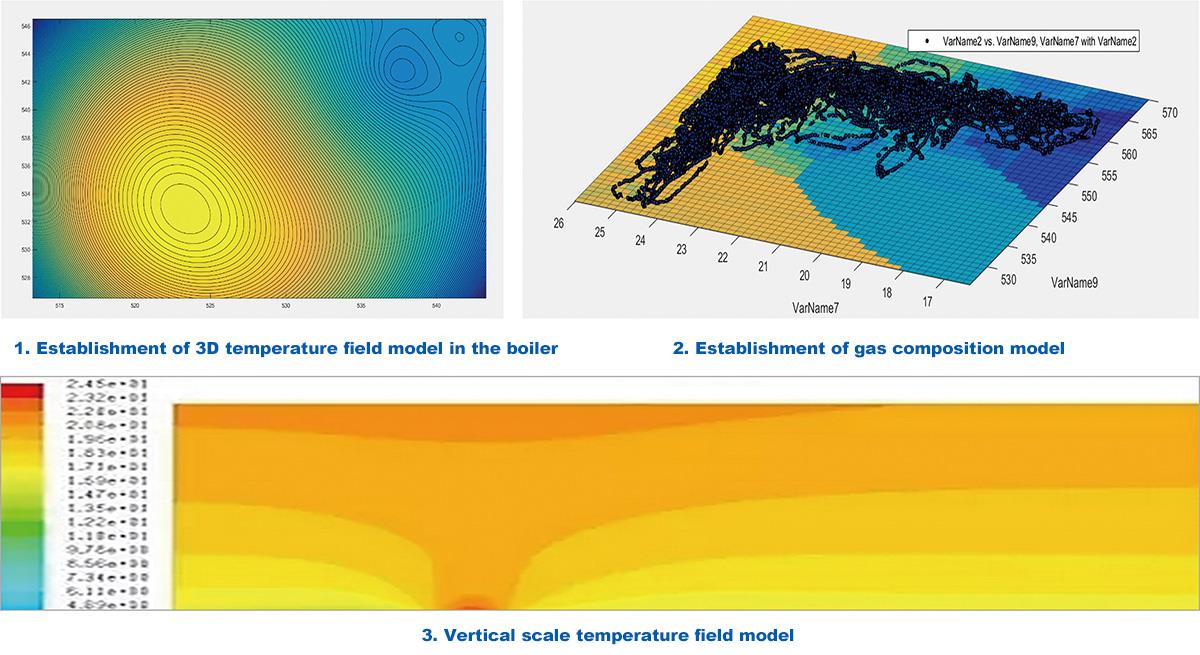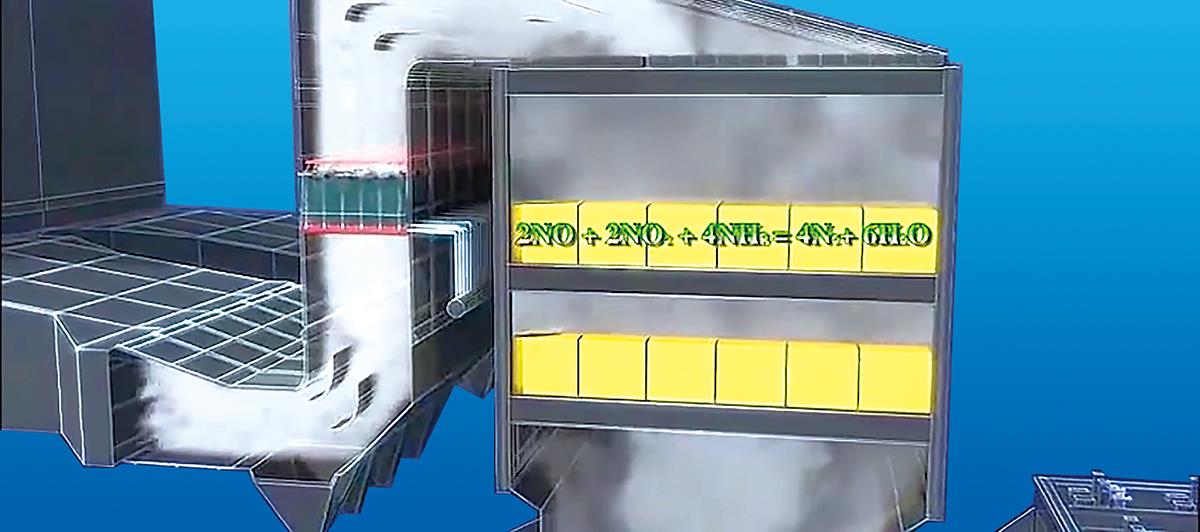Professional intelligent technology transformation and on-site solutions
1. Boiler burning safety and comprehensive efficiency improvement
■ Key technologies
(1) Comprehensively calculate the boiler heat load, section heat load and heat load condition of the burning area, establish a 3D furnace model of safety, high efficiency and environmental protection, and transform the burner and auxiliary wind system;
(2) Combining burner, coal quality and boiler layout, establish a double-scale model of in-boiler burning process, effectively control boiler coking, improve boiler burning efficiency, and reduce boiler chamber exit NOx emissions;
(3) Design a unique burner combination to improve the adaptability of the boiler coal type, supplemented by the system's cold and hot state debugging, to form a new burning control adjustment strategy.
■ Expected effect
(1) Completely solve the coking problem, quickly attachment of 75% of the load, and achieve an increase of 432 million KWH (according to 85% load in the non-heating period);
(2) NOx is less than 260mg below 50% load, less than 160mg/Nm3 above 75% load; ammonia injection is reduced by 25% in each load section;
(3) Improve the wide adaptability of boiler coal types, achieve full load without coking, effectively control NOx of each load, and improve boiler comprehensive indicators;
(4) Achieve the best dynamic coordination of 3D ("safety/high efficiency/environmental protection”) of boilers, with the annual comprehensive contribution at least 10 million RMB.

2. Technical transformation of wide-load denitration flue gas bypass baffle
■ Key technologies
(1) Professionally solve the stable operation strategy of deep peak-regulation denitration system; control logic optimization + operation mode adjustment;
(2) Comprehensive thermal load accounting, especially for heating units and deep peak-regulation SCR thermal load model;
(3) Fully consider the safety pre-control strategy of full-load and bypass flue; optimized commissioning of cold and hot state of the denitration system to ensure global denitrification.
■ Expected effect
(1) Realize the stable operation of the deep peak-regulation denitration system, and obtain the auxiliary compensation for deep peak regulation of the power grid;
(2) Economic and safe operation of the deep peak-regulation denitration to expand the catalyst life by 30%;
(3) Realize full-load denitration of unit start-up, shutdown, and deep peak regulation with an annual comprehensive income of more than 30 million RMB.
3. Dynamic flow field based denitration optimization operation and safety pre-control system
■ Key technologies
(1) Simulation of big data flow field, optimization of cold and hot state test flow field, and establishment of basic model of flow field ammonia injection;
(2) Big data coupling analysis of dynamic flow field intelligent monitoring feedforward, and ammonia escape/NOx and other multi-point feedback;
(3) Catalyst activity index and attenuation rate judgment, poisoning test, and operation and maintenance strategy; catalytic activity temperature modeling, and intelligent analysis of catalyst degradation;
(4) Dynamic intelligent monitoring of small partition matrix NOx/NH3, multi-source coupled diagnostic decision-making such as catalyst characteristic index, smoke composition and flow field feedforward, and export multi-source monitoring.
■ Expected effect
(1) The precision of ammonia injection is reduced by 20%, with income about 500k RMB/year;
(2) Effectively avoid dust remover and preheater blockage, indirectly contributing 10% load rate, with income of about 3 million RMB;
(3) Automatic judgment of catalyst characteristic degradation and poisoning, send the operation and maintenance strategy, reduce the additional ammonia consumption by 10%, and realize revenue about 250k RMB;
(4) Send the deteriorated catalyst life expansion strategy, to expand catalyst life by 40% and generate income at least 1.6 million RMB;
(5) The comprehensive income from direct contribution and loss avoidance of the system is about 5 million RMB.

4. Technical improvement of comprehensive efficiency raising of differential self-interference based medium-speed coal mill
■ Key technologies
(1) Establish a model of drying capacity, carrying capacity and the relationship model between unit coal-pulverizing consumption and coal type, and optimize the separation efficiency and flow field structure of the coal mill;
(2) Cut the secondary circulation of separating coarse particles by the separator, optimize and reform the originally designed external returned powder cone and coal chute of the separator, to reduce inefficient carrying;
(3) The free-disturbance technology of the millstone is modified to carry the inherently qualified powder and avoid ineffective grinding;
(4) Reformation of the pulverized coal distribution guide cone stirrer to increase the uniformity coefficient to 1.2.
■ Expected effect
(1) Capacity of the coal mill is increased by 10%, the unit consumption is reduced by 1.5kW/ton, and the annual electricity consumption for milling is decreased by 100k RMB;
(2) The operation mode of “four in operation and one for standby" of the powder system to avoid the cost arising from the impact of the coal loader during the maintenance period of 430k RMB;
(3) The coal powder uniformity coefficient is raised to 1.2, effectively ensuring low-load stable burning, increasing boiler efficiency by 0.2%, and contributing 1 million RMB annually;
(4) Comprehensively considering power consumption, operation mode and burning efficiency, the annual contribution is at least 1.5 million RMB.






